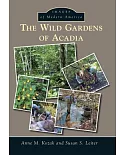In 1871 the young mineralogist Albert Peale set out with the vaunted Hayden Expedition to map and explore the Yellowstone Basin. Ferdinand Hayden asked Peale, his former student, to write a
series of letters to the Philadelphia Press about the survey’s work. Just as these letters, the first impressions of Yellowstone sent back from the field, introduced nineteenth-century
readers to some of the most breathtaking wonders of the American West, they allow readers today to rediscover one of the nation’s most beloved and visited natural areas as it was just five
months before it became the world’s first national park.
Written by a scientist for the general reader, Peale’s letters convey the grandeur of Yellowstone with great clarity and immediacy, even as they offer apt, detailed descriptions of the
basin’s geologic features, from the geysers—Giant, Grotto, and Mud, among others—to the creeks and rivers, craters and springs. Illustrating these descriptions are the earliest artistic
images of Yellowstone, also done during the expedition—watercolor field sketches by Thomas Moran, photographs by William Henry Jackson, and the now little-known works of the party’s official
artist, Henry Wood Elliott. Ranging from dramatic panoramic landscapes to lighthearted sketches of the expedition’s more personal moments, these images combine with Peale’s written
impressions to give readers a true and rare sense of what it was like for these men to marvel at Yellowstone for the first time.





















